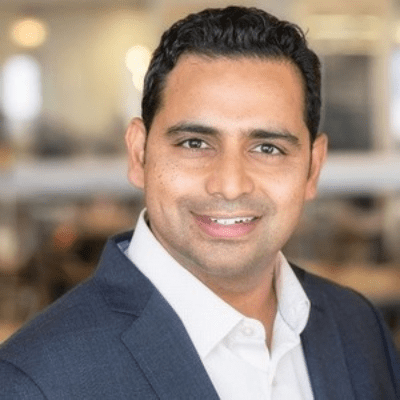Driving Talent Acquisition’s value with robust recruiting analytics
How are leading recruiting organizations using robust recruiting analytics and data to build credibility and confidence in the talent acquisition function internally?
What types of recruiting metrics should TA managers be sharing with key stakeholders in their organization to prove performance and talent acquisition's value to the wider business?
What technologies can TA leaders use to identify bottlenecks and gain data-led visibility into the performance of your hiring funnel to stay ahead of the game?



With talent acquisition finally being considered a valued business partner, getting the right tools to collect data and build a culture of data-driven recruiting is critical for every organization. After all, you can’t improve what you can’t measure.
Watch this panel from UNLEASH and Gem to learn how you can leverage robust recruiting analytics and data to drive talent acquisition’s value in your organization. Hear talent leaders share how they have engineered their own teams to ensure they leverage data to optimize their recruiting funnels and win top talent.
The talent market has changed
With the ‘Great Resignation’ in the international media spotlight, you’d be hard-pressed to argue that the talent market hasn’t changed dramatically.
In such a competitive environment, TA and recruitment are being looked at with unforgiving rigor to help support the growth of the business. HR has often fought for a seat at the table, but now is that time where they need, and ought to be, at that table.
The role that TA leaders have begun to play is truly transformative. There has never been a time I can think of where HR has been so central to the business strategy and taking care of the growth of the business.
Prathap Dendi, COO at Gem
The focus has shifted to the candidate being in the driving seat of the hiring process. Now it is more commonplace to have candidates considering multiple opportunities than ever before. “The experience of the candidate,” said Prathap in his opening comments, “has become center stage. Gone are the days where you walk a candidate into a physical room and go through a physical tour to represent and welcome the candidate into the company culture. Now it’s all digital.”
Matt presented his take on the changing landscape too, considering the opportunities and challenges at the TA leader’s feet. He shared his belief that the shift to video, among some of the other notable changes to the way we work and the accessibility of talent data and analytics, presents exciting opportunities for organizations to venture into untapped talent markets.
A lot of hiring used to be constrained by geography. That’s now shifting a lot, opening up a lot more talent pools, and there’s positive implications for diversity recruiting, and other areas as well.
Matt Tague, Former Director, Talent Sourcing, Lyft
Distilling data into actionable insights
Matt noted that “We’ve got more data today than we’ve ever had available in the talent function”. So, how do TA leaders prevent themselves from getting lost with data and bogged down with analyzing too much. Whilst data may be key, is there such thing as too much?
I think one of the things that I’ve learned from my time at Microsoft, Lyft, and LinkedIn is really the importance of data and leveraging data to help the business meet its actual goals.
Matt Tague, Former Director, Talent Sourcing, Lyft
“It’s the old adage that you know 50% of your advertising spend works, but you don’t know which 50%,” Matt explained. He followed by noting that now, with tools like Gem it’s a really exciting time, as TA leaders can now see the true ROI of their investments and how to get the best leverage from their resources, to set them up for success at scale.
He considers that coming at data from a customer-centric approach is crucial for success. By boiling down to the insights that the leaders in the organization need and collecting that, and presenting this to them on a regular basis is required. TA leaders need to understand what the organization and leadership goals and priorities are, first and foremost. Understanding this will provide the yardstick and targets to determine how successful you are for important organization initiatives, like diversity recruiting.
Fundamentally, what gets measured gets done.
Matt Tague, Former Director, Talent Sourcing, Lyft
But it’s not just knowing what to measure. “Targets in isolation are not a successful strategy,” said Matt. “You need to couple that with an inclusive foundation and process and culture.” Similar to Sales or Marketing strategies, TA leaders need to be thinking about and mapping their total addressable market and setting off goals from this, understanding the very granular requirements and working off these. Matt outlined his experience of this, where companies are looking to expand to new locations. “Before, companies would land in a location and then try to find the talent, whereas we’ve seen the reverse with smart companies who are looking at the talent first, then deciding where to place offices based on that.”
In the same vein, Prathap considered the importance of leveraging data into actionability is so vital for success in today’s competitive TA environment. Being able to model scenarios, “the ability to take data, and analytics, and flip it into planning and forecasting is what the modern talent leaders are truly enjoying,” he said. These types of insights are something that TA leaders and businesses broadly, need to be taking advantage of. By being able to plan based on real data, and not the benchmark data, will enable a high amount of predictability to enable the running of a scalable and efficient organization.
The ground rule for analytics is having clean, complete and credible data. And if you have this, then looking for how you can make it as near real-time as possible makes for viable actionability.
Prathap Dendi, COO at Gem
“Analytics without actionability is meaningless,” stated Prathap. Having the analytics behind your data can enable TA leaders to take advantage of insights that can show, for example, whether spending on a certain channel is lucrative or not; if certain spends are yielding the right type of candidate; and serve the broader business functions by planning ahead. Having data in open connected systems where you can see success rates “by channel, by source, by event, spend, performance”, and the reasons why can enable TA leaders to switch up their approach from depending on marketing automation tools and inbound resumes to being strategically growth-minded leaders and businesses.
4 Steps for getting business buy-in
1.What are the goals of your partners?
Understanding the goals of your business partners is crucial, Matt presented. By doing so, you’ll be able to create a shared vision of what success looks like, and then be able to map out the path to get there, together. By understanding the human capital implications of a broader business decision, like wanting to launch a new product, for example, “you’re going to need new product managers and you’ll need to understand how many you’ll need and work backward from the end goal to make a plan.”
“That’s where you get the light bulb to go off. And they say, yes, now I see it. Now I see how your goals are my goals. And my goals are your goals. So, I think that’s really the critical piece – investing that time with those leaders to help them see that because it seems obvious to us on the ground, but it’s not always obvious to them. I think taking them on that journey with you is far more effective than just throwing data and insights over the wall.”
2. Talk the Talk
TA leaders need to be able to speak the language of the business and have empathy for the “client”. Understanding what they care about and what keeps them up at night, and starting with their goals, not the goals of HR is crucial.
“A lot of times, us in the TA function, we speak TA, we speak talent, and we all understand that fluently. But our business partners don’t speak that language day to day, they speak the language of business,” considered Matt. By understanding the worldview of the “client” in the same way Sales and Marketing do, and being able to translate this, “almost like a human API to match up what that looks like for you” is where you get real buy-in.
Prathap considered that being able to present a candidate’s full profile is one way of being able to do this. Creating a system of record right for each candidate from the top of the funnel, being able to outline “and tag them as not only is this a great engineering person, but also, they live in this location, they want to do this and has an affinity to be in this type of activity, and wants to be a manager in six months, all of those is what defines that person, and this is what they bring to the table. That is what is the full profile.”
3. Creating accountability and incentivization
One question came up around the idea of the frozen middle – “those middle managers who are the gateway between junior to mid-level employees and leaders in the corporation… The most resistant to new ways of doing business, and to innovative ideas and perspectives.”
Prathap presented his experience of not middle management, but Board Level where they ensure actionable commitment, (in this case to DE&I efforts), by not just including it as a priority in the organization’s mission statement, “but by numbers, which are then measured and reported on every quarter, in the same way, you measure your revenue numbers.” He believes that a similar methodology, of using numbers and data insights that are now available to hiring managers will provide a way for leaders to execute these strategies as a true priority.
Taking this a step further, Matt commented on his experience of tieing executive compensation directly to targets (again, specifically in this instance to diversity hiring targets).
4. Start simple
“If your business strategy doesn’t inform your hiring plan right away, your business strategy is dead on arrival” outlined Prathap.
Being able to define 3-5 metrics that you want to track is a great place to start if you don’t have anything in place yet, added Matt. By building a dashboard with your business partners as the source of truth (not assuming anything) and outlining the core things that matter to each stakeholder is the best place to start.
If you want to know more about Gem, get a personalized demo here.

